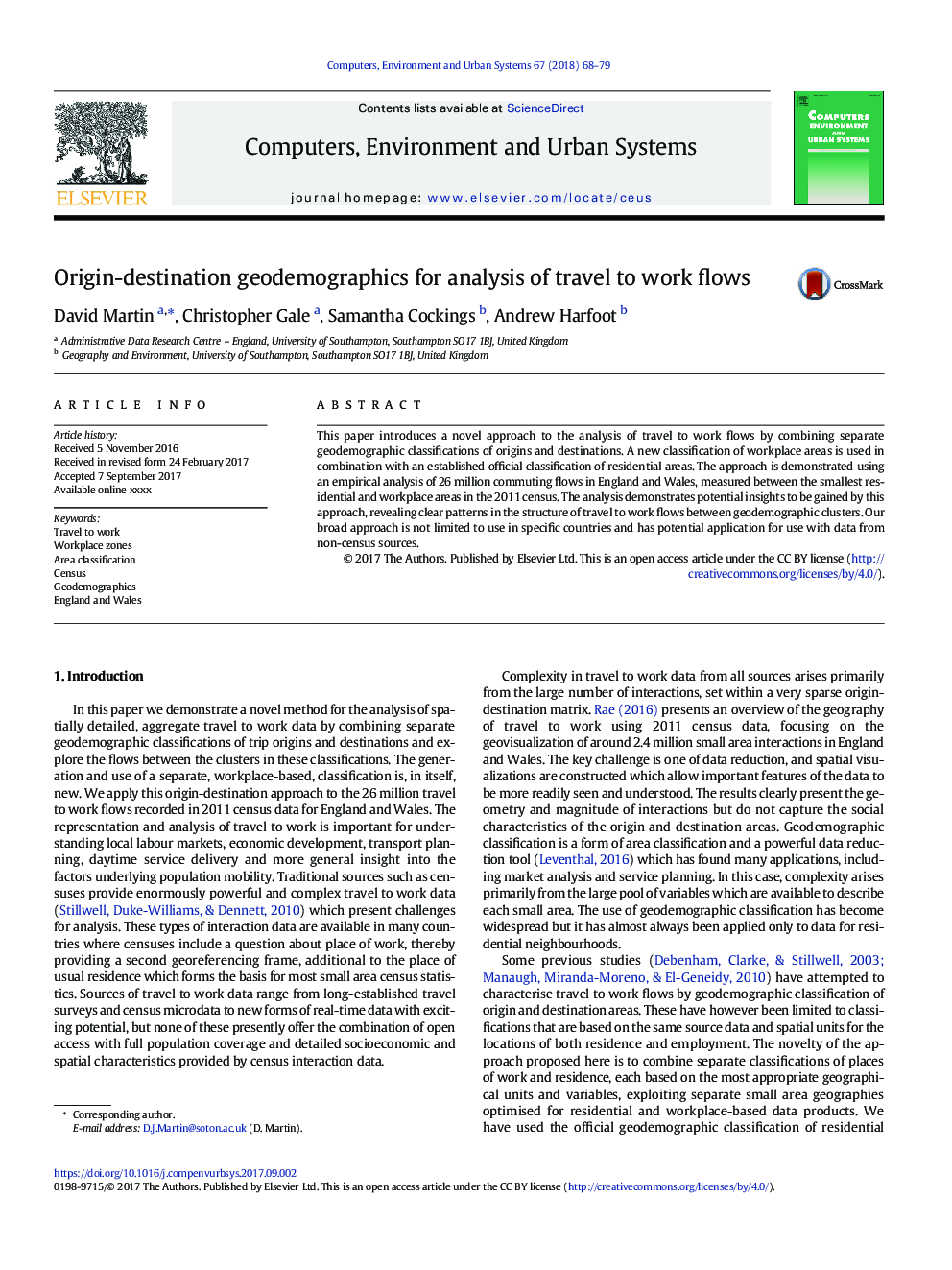| Article ID | Journal | Published Year | Pages | File Type |
|---|---|---|---|---|
| 4965107 | Computers, Environment and Urban Systems | 2018 | 12 Pages |
â¢A new approach to analysis of travel to work flows is proposed.â¢A new classification of census workplace data is constructed to complement an official classification of residential areas.â¢26 million commuting flows in England and Wales are examined by combining classifications of origins and destinations.â¢The analysis provides new representations of the structure of travel to work between residential and workplace area types.â¢The approach is independent of the specific data used and has potential applications for data from non-census sources.
This paper introduces a novel approach to the analysis of travel to work flows by combining separate geodemographic classifications of origins and destinations. A new classification of workplace areas is used in combination with an established official classification of residential areas. The approach is demonstrated using an empirical analysis of 26 million commuting flows in England and Wales, measured between the smallest residential and workplace areas in the 2011 census. The analysis demonstrates potential insights to be gained by this approach, revealing clear patterns in the structure of travel to work flows between geodemographic clusters. Our broad approach is not limited to use in specific countries and has potential application for use with data from non-census sources.
